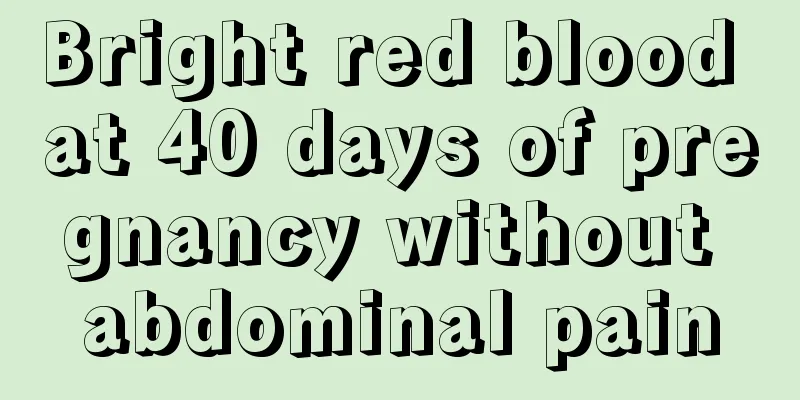Female lower abdominal distension

|
I believe that many women in life often suffer from the problem of lower abdominal distension, which is easily ignored by many friends, so that in the end some serious problems are often found. If the lower abdominal distension and pain occurs every time during menstruation, it may be considered as mild dysmenorrhea or uterine problems. If it is cramping pain or distension in the middle of the lower abdomen, there are different reasons. 1) Lower abdominal distension and pain during menstruation every month, and mild pain before menstruation Endometriosis: Cells in the uterus grow outside the uterus where they don't belong, such as on the outside of the fallopian tubes, ovaries, or bladder. At the end of the period, these cells also bleed lightly, causing inflammation and damage to the areas they extend to. Our bodies automatically create scar tissue to surround these cells and stop this destructive effect. The production of scar tissue can cause lower abdominal pain and reduce our fertility. At first, the patient feels the usual premenstrual abdominal distension, followed by a similar feeling of lower abdominal pain as before menstruation, but not before menstruation. 2) Lower abdominal cramps and pain, accompanied by dizziness, abdominal distension, persistent diarrhea or constipation Acute enteritis: Dysfunction of the large intestine causes extreme sensitivity of nerves and muscles. 20% of the population suffers from sensitive bowel syndrome (IBS), 65% of which are women. Taking a bath can effectively eliminate pain, dizziness, lower abdominal distension, persistent diarrhea or constipation. 3) Pain in the lower abdomen, discomfort during urination, and frequent urination Interstitial cystitis: Your urinary tract is inflamed, causing your bladder to swell. Doctors generally believe that women with this disease may have lesions in the bladder wall, which stimulates the central nervous system in the brain to produce a urination response. Pain near the pubic bone, which worsens when trying to urinate; frequent urination (at least once an hour during the day and multiple times at night), and sharp pain during intercourse. 4) Lower abdominal distension and pain during activities Ovarian cyst: An ovarian cyst is a lump or mass filled with fluid inside the uterus. Less than 5% of people with ovarian cysts will develop cancer. All ovarian cysts are functional cysts, which means that the developing eggs may be surrounded by cystic fluid, causing ovarian enlargement and lower abdominal pain. Ovarian cysts can grow over time to the point where they become painful when you exercise or stand up after sitting still. At this time, the condition was already quite serious. Because the accumulated fluid in the cyst causes the ovary to sag due to gravity, you will feel a bloating and pain in your lower abdomen when you exercise. Gynecologists can understand the condition by palpating the lower abdomen and determine whether there is an ovarian cyst. If an ultrasound examination reveals an ovarian cyst and it appears to be cancerous or is too large, your doctor will recommend surgery to remove it. |
<<: Brown vaginal discharge during early pregnancy
>>: Vaginal pain and no inflammation during gynecological examination
Recommend
Little secrets in the kitchen: Are you eating the right fruits and vegetables?
It would be a waste to wash off the "white f...
What are the causes of uterine fibroids? These are the ones you have to watch
Uterine fibroids are common benign uterine tumors...
Can pregnant women eat barbecue? What are the precautions for pregnant women to eat barbecue?
Although barbecue is delicious, we still have som...
What are the oral medications for candidal vaginitis?
In fact, I believe that female friends should be ...
What is the cause of excessive vaginal discharge after curettage?
Most women will experience continuous bleeding af...
Dryness after having sex
After a woman has just given birth, her urinary s...
Is it good to drink milk after eating barbecue? What is the best way to eat barbecue?
In life, it is also called clams. It is one of th...
20 early signs of cancer, check yourself now!
In the past, people had the impression that cance...
Is it normal to have chest pain before your period?
The menstrual period is a unique physiological st...
How many days of menstruation are considered normal?
Menstruation is a physiological reaction of women...
Left-sided polycystic ovary syndrome
Left-sided polycystic ovary syndrome is easy for ...
Can I still breastfeed after drinking barley tea? Be careful of milk withdrawal
There are many benefits of drinking barley tea. W...
Tips for pregnant women who can't cough up phlegm
Coughing is a very common symptom of the disease....
What are the symptoms of pubic lice?
When you have fleas, your hair will become very i...
What is the meat that is discharged during menstruation?
When having their period, every woman must be ext...









